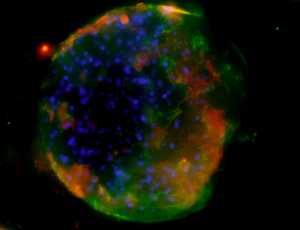14 Feb ‘Liver-on-a-Chip’ Technology Can Accurately Mimic Hepatitis B Infection
MedicalResearch.com Interview with:

Primary hepatocytes grown in 3D microfluidic “liver-on-a-chip” platform following infection with hepatitis B virus. Credit: Marcus Dorner/Imperial College London
Marcus Dorner, PhD
Non-Clinical Senior Lecturer in Immunology
Wellcome Trust Investigator
Imperial College London
Department of Medicine, Section of Virology
School of Medicine
London United Kingdom
MedicalResearch.com: What is the background for this study? What are the main findings?
Response: Hepatitis B virus (HBV) infection globally affects over 250 million people and is currently not curable. This infection can lead to liver cirrhosis and liver cancer and is among the leading causes for liver transplantation. Unfortunately, HBV is among the most difficult viruses to study in the laboratory, since model systems are not very good at recapitulating what happens in infected humans.
We have just described the first model to effectively change this. Using an artificial “Liver-on-a-Chip”, we have developed a tool, which can potentially revolutionise how we study viral infections by merging the study of viruses with tissue engineering. This model is over 10,000-fold more susceptible to HBV infection and accurately mimics, what happens in an infected patient. This can now be utilised to develop novel and potentially curative therapies, which would benefit millions of people currently living with chronic HBV infection.
MedicalResearch.com: What should readers take away from your report?
Response: Studying chronic viral infections and developing drugs often requires animal experiments, which might not always result in data, which are translatable to humans. Using advanced tissue engineering models to study these infections in their natural human host environment not only results in directly usable data for human applications but furthermore also reduces the need for animal experiments.
MedicalResearch.com: What recommendations do you have for future research as a result of this work?
Response: HBV infection in advanced tissue engineering models and “Organs-on-a-Chip” is really just the beginning. Many different organ systems have been developed in the past and more infectious diseases could be tested in these, ranging from viral infections to bacterial infections or parasites like malaria.
Citations:
3D microfluidic liver cultures as a physiological preclinical tool for hepatitis B virus infection
A. M. Ortega-Prieto, J. K. Skelton, S. N. Wai, E. Large, M. Lussignol, G. Vizcay-Barrena, D. Hughes, R. A. Fleck, M. Thursz, M. T. Catanese & M. Dorner
Nature Communications volume 9, Article number: 682(2018)
doi:10.1038/s41467-018-02969-8
[wysija_form id=”3″]
The information on MedicalResearch.com is provided for educational purposes only, and is in no way intended to diagnose, cure, or treat any medical or other condition. Always seek the advice of your physician or other qualified health and ask your doctor any questions you may have regarding a medical condition. In addition to all other limitations and disclaimers in this agreement, service provider and its third party providers disclaim any liability or loss in connection with the content provided on this website.
Last Updated on February 14, 2018 by Marie Benz MD FAAD
